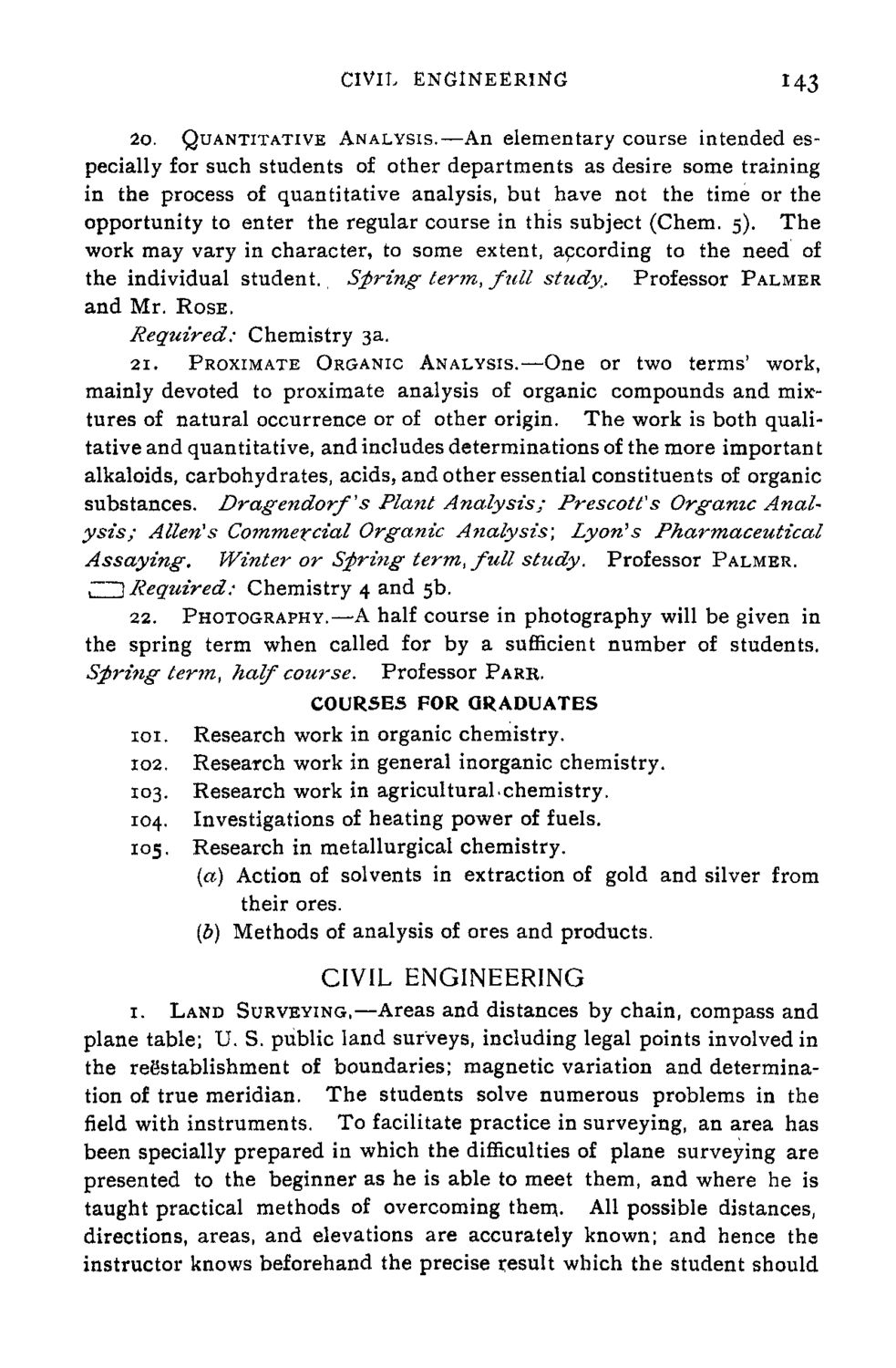Caption: Course Catalog - 1896-1897
This is a reduced-resolution page image for fast online browsing.

EXTRACTED TEXT FROM PAGE:
CIVIL ENGINEERING 20. 143 QUANTITATIVE ANALYSIS.—An elementary course intended es- pecially for such students of other departments as desire some training in the process of quantitative analysis, but have not the time or the opportunity to enter the regular course in this subject (Chem. 5). The work may vary in character, to some extent, according to the need of the individual student. Spring term, full study. Professor PALMER and Mr. ROSE. Required: 21. Chemistry 3a. PROXIMATE ORGANIC ANALYSIS.—One or two terms' work, mainly devoted to proximate analysis of organic compounds and mixtures of natural occurrence or of other origin. The work is both qualitative and quantitative, and includes determinations of the more importan t alkaloids, carbohydrates, acids, and other essential constituents of organic substances. Dragendorf's Plant Analysis; Prescott's Organic Analysis; Allen's Commercial Organic Analysis; Lyon's Pharmaceutical Assaying. Winter or Sfring term, full study. Professor PALMER. 1 Required: Chemistry 4 and 5b. 22. PHOTOGRAPHY.—A half course in photography will be given in the spring term when called for by a sufficient number of students. Spring term, half course. Professor PARR. COURSES FOR GRADUATES 101. Research work in organic chemistry. 102. Research work in general inorganic chemistry. 103. Research work in agricultural.chemistry. 104. Investigations of heating power of fuels. 105. Research in metallurgical chemistry. (a) Action of solvents in extraction of gold and silver from their ores. (b) Methods of analysis of ores and products. , CIVIL ENGINEERING 1. LAND SURVEYING,—Areas and distances by chain, compass and plane table; U. S. public land surveys, including legal points involved in the refistablishment of boundaries; magnetic variation and determination of true meridian. The students solve numerous problems in the field with instruments. To facilitate practice in surveying, an area has been specially prepared in which the difficulties of plane surveying are presented to the beginner as he is able to meet them, and where he is taught practical methods of overcoming them.. All possible distances, directions, areas, and elevations are accurately known; and hence the instructor knows beforehand the precise result which the student should
|